Terry’s Tricks for Avoiding Air Pockets and Bulges on Cakes

Ever decorated a lovely cake with fondant only to discover air pockets on the sides and bulges around the base of the cake? These must be two of the most frustrating challenges faced by cake decorators. Even the most experienced cake decorators have to deal with these issues on a regular basis. In this post, I would be sharing some tricks I have learnt over time on how to avoid these from occurring, and if they do occur, how to fix them. Though the tricks I will be sharing below are by no means exhaustive, you will find that applying them when decorating your cakes will result in smoother fondant covered cakes. For the purpose of clarity, each trick will be discussed under a different subheading.
Before going on to discuss the tricks, it is pertinent that I explain why air bubble and bulges occur in fondant covered cakes. The simple explanation is that air pockets and bulges are caused by 4 major factors: (1) Trapped air trying to escape from the cake; (2) The cake sponges and frosting settling; (3) Change in weather conditions; and (4) Inadequate cake structure and support. Trapped air is the major cause of air pockets in cakes. You might wonder how air gets trapped in cakes. It’s really quite simple: if there are gaps between the cake layers and the frosting/filling, air would get trapped in those spaces. As the cake comes to room temperature and settles, the sponges would press on the frosting/filling forcing out the air. Due to how well fondant seals cakes, this forced out air is trapped underneath the fondant with no where to escape and appear on the top and sides of the cake as pockets. Also, if you reside in hot climates, there is the tendency for your frosting to melt as the cake comes to room temperature. If you use a lot of frosting underneath your fondant, the melting frosting would collect at the base of the cake which is part of what causes bulges around the base of cakes. Finally, if your cake support system is inadequate (dowels too short or cake boards too small), it could lead to folds and bulges around the top and base of your cake.
TRICKS:
(1) ALLOW YOUR SPONGES TO REST BEFORE FROSTING
Ask most experienced bakers and they will tell you that they never bake their cakes, frost them and cover them with fondant on the same day. Cakes need time to rest between each stage. As a cake cools down, it shrinks. Frosting a cake that is yet to shrink properly would affect the structure of the cake. A cake that is baked, frosted and covered with fondant on the same day would most likely develop air pockets because as the cake settles it would force out air which would get trapped underneath the fondant covering. Develop a system in which you bake your sponges on one day, level and frost them on another and cover them with fondant on yet another. For instance, if you need to deliver a cake on Saturday, bake it on Wednesday, frost it on Thursday, cover it with fondant and decorate it on Friday. Add the final details on Saturday.
By spacing out the cake making project this way, you would be achieving a lot of things. First, your cake layers would have shrunk to their real sizes, thus eliminating the possibility of developing air pockets after frosting and decorating. Second, it is always easier to work with a cold cake than with a cake at room temperature: easier to level, easier to frost, easier to manage, easier to lift and easier to stack. Third, you would reduce the pressure involved in trying to achieve a lot within a day which in turn would lead to better executed cakes which you and your client would be proud of.
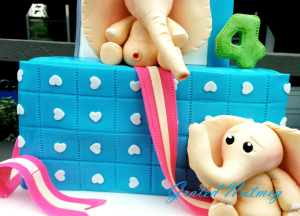
Notice the large air pocket in front of this cake tier? I would have avoided this by allowing my tiers to settle before frosting and decorating.
After baking your sponges, allow them to cool completely on wire racks, wrap them tightly in cling film and place them in the fridge overnight. Do not wrap warm cakes in cling film or they would sweat which in turn would encourage bacterial growth and/or reduce the shelf life of your cake. Do not place your sponge in the fridge without wrapping it tightly. This will make your cake dry.
(2) ALLOW YOUR FROSTED TIERS TO REST BEFORE COVERING WITH FONDANT
As stated above, do not frost your cakes and cover them with fondant on the same day. This should only be done in cases where time is of the essence. After filling and frosting your cake tiers, place them in the fridge so they settle and so the frosting hardens around the cake. If you try to decorate a cake while the frosting is still soft, you will create dents in the frosting while applying your fondant. These dents would in turn trap air which would create air bubbles. In addition, you will not end up with a smooth finish. Allowing your frosted cakes to rest will also ensure that all the air in the cake is pushed out of the cake as the sponges press on the frosting/filling.
A trick I usually use is to make a hole down the middle of a crumb coated cake before placing it in the fridge. This would help air escape as the cake settles. You can read more about this trick here. I also make similar holes in the middle of my tiers after covering them with fondant for the same reason. A fridge is essential when frosting and decorating cakes. My cakes constantly move from the turn table to the fridge and back. Try your best to keep your cakes chill throughout the decorating process. This would help keep the structure of the cake.
(3) TORT, LEVEL AND FROST CAKE LAYERS PROPERLY
It is important to properly torte your cake layers. Uneven cake layers would lead to spaces in the cake tier after frosting which in turn would create air bubbles after fondant has been applied. I have a detailed post here on how to torte and level cake tiers and another post here on how to frost cake tiers properly. When leveling your cake layers, be sure to cut off all the doom/crown from the top of the cake. Do not be stingy when cutting off the doom. What you want to achieve on all your cake layers are straight sides. There should be no curves at the top or between each layer. Stuffing gaps along the sides of cake tiers with frosting would only lead to weakness in the cake structure and increase the likelihood of air bubbles.
When frosting and filling your layers, make sure your frosting and fillings are leveled and smooth. When you place each layer on a frosted/filled layer, be sure to press that top layer down on the frosting. This would ensure that all air pockets are eliminated. There should be no gap whatsoever between your layers and frosting. If you are filling the cake with things other than frosting, always create a dam around the filling with frosting. This would trap the filling in and prevent the sides of the cake from bulging. When frosting the sides of tiers, be stingy with your frosting. Your goal should be to achieve a very smooth outside frosting with as little frosting as possible. If you apply a lot of frosting to the outside of your cake, the frosting would melt as the cake comes to room temperature and collect at the bottom of the cake which would lead to bulges. There is also the likelihood that the fondant would exact pressure on the frosting as the cake cools leading to bulges on the sides of the cake.

Notice the bulge at the base of this cake. It was the result of too much frosting underneath the fondant.
(4) ELIMINATE SPACES BETWEEN THE FONDANT AND CAKE TIER
When draping a frosted cake with fondant, be sure that the fondant comes in contact with the entire body of the cake. To achieve this, always brush your frosted cake with a bit of water before draping it with fondant. You do not however want to soak the frosting with water as this could encourage bacterial growth. Use a pastry brush and brush the entire surface area of the cake with as little water as possible. This would help ensure that the fondant sticks to the body of the cake without leaving gaps. Gaps would trap air. The cake can also be brushed with other liquids.
When draping fondant over cake tiers, use a fondant smoother to smooth the top of the cake before stretching the fondant to cover the sides. This will remove trapped in air from the top of the cake. Failure to do this would lead to air bubbles on top of the cake and around the top edges of the cake. This in turn will prevent you from having sharp edges which we all want as bakers. Also, be sure to make your fondant covering as smooth as possible. Folds, overlaps and bumps would trap air around the cake.
(5) STACK AND DOWEL CAKE TIERS PROPERLY
A lot could go wrong if a cake tier is not properly stacked or doweled. If any of your dowel is too short, the tier on top would press down on the tier below. This added pressure would create air pockets around the top of the tier below (it would also make your cake tiers to tilt). Be sure to use a cake card underneath each tier before stacking it. Your cake tiers should never rest on each other. Ideally, the structure of your cake should be a network of dowels resting on cake cards and boards. The tiers should never have to bear the weight of the tiers above them. I have a very comprehensive post here on how to properly dowel and stack tiers.
Your choice of cake boards is also very important. Your cake boards should always be at least 2 inches larger than the size of the bottom tier. They should also be strong enough to bear the weight of the whole cake. If you use a weak cake card as your cake board or a cake drum that is too small, you will create folds and bulges along the base of the cake each time you lift up the cake to transfer or transport it. You can read more about how to properly use cake boards here.

Notice bulge at the base of the cake. This happened because I used a thin cake card instead of a cake drum as my cake board.
(6) QUICK FIXES
Even after obeying all the rules above, sometimes air pockets still happen. Below are a few quick fixes if this occurs.
i. Some frosting like cream cheese frosting do not crust and thus lead to dents during fondant application. Consider filling your cake and crumb coating it with cream cheese frosting and applying another layer of buttercream frosting around the cream cheese frosting after the cake has chilled. This would provide better structure for the fondant. I just shared a huge trade secret with you.
ii. Always have a toothpick or needle on hand. As soon as you notice air pockets, prick them and push out the air gently with your fingers or fondant smoother.
iii. When decorating cakes which take a long time to decorate, air pockets can form along the way as the cake comes to room temperature. Consider returning the cake to the fridge at intervals to keep it cold always. I have read a lot of views about not keeping fondant covered cakes in the fridge. If you have seen any of my cakes, they all stay in the fridge until they are picked up. I repeat again for emphasis, the fridge is your friend as a cake decorator.
iv. Not every decoration you see on a cake was planned. There is a lot that can be covered with flowers, ornaments, tags et cetera. If a large bulge has created a dent or tear on your cake, think of creative was of covering that flaw with decorations. Sometimes, I wrap my cake tiers with soft fondant panels to hide flaws. It’s ok, no one needs to know.
v. Sometimes, you just have to start all over again. There are air pockets and bulges which cannot be fixed. I know its hard, but some times you just have to take off the fondant, work on the cake structure and apply the fondant all over again.
You must have developed your own tricks for avoiding cake bulges and air pockets. Please feel free to add to this body of knowledge in the comment section below. Thanks, Terry.
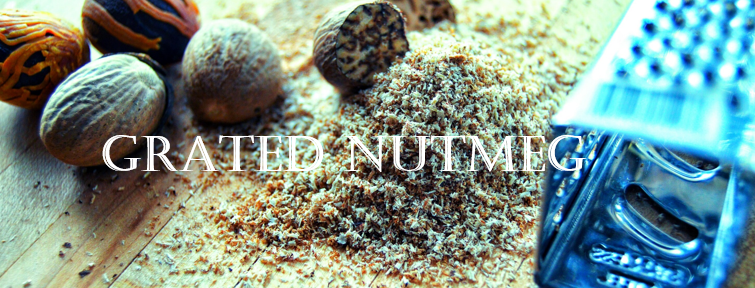

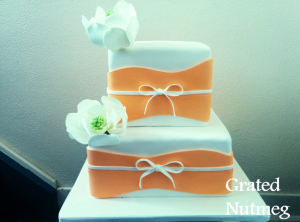
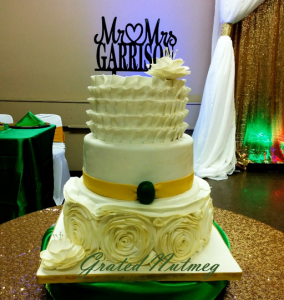
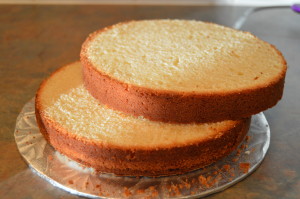
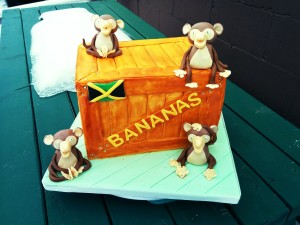
Wow, what an informative post. I wish I can hug you a thousand times right now because the post just fixed a major challenge I av been having for a while now. Thank you so much. And again talking about baking 3 days ahead delivery of cakes,what about the shelf life of cakes?wont the spoil in those 2 to 3 days interval? Especially with red velvet cakes.
Thanks Tega. I place the cakes in the fridge and so they remain fresh. The self life is not affected even with red velvet cakes.
Thanks Terry. This is really informatve and will help improve my work. Thanks for sharing. Remain blessed.
Thanks Jumoke.
Thank you soooo much for this information. Normally when I have air pocket I insert a tiny pin into the bulge to free the air, most time it’s doesn’t show but when d place I inserted the pin is visible I cover it up with decoration.
Hi, thanks a lot for your advice. you are a very good tutor. I do appreciate your effort to share your knowledge with others. May God expand you beyond your expectation .
You are welcome Kay. Thanks
Yup. That’s the way to go.
Welcome back after d long break.We v missed you.Tnx for d tutorials.
Thanks Bimbo. Glad to be back.
Welcome back. Thanks for sharing and may God bless you abundantly.
Thanks
Wow! What can I say if not thank you for this well structured information. Thanks dear and may God expand you more and more
Thanks
That first, duck-egg blue cake is lovely! Reminds me of the seaside on a sweet day 🙂
Thanks Neyon (the Nutmeg Lady). I visit your blog a lot. Glad to have you here. You can find that cake and a lot more in my cake gallery.
God bless you Terry.
Thanks Bukki.
Thank you Terry, for yet another very informative post. I am amazed at your selflessness.
My pleasure.
Hello Terry,thanks for the tuutorials. My question is r3garding refrigerating frosted cakes before covering. Wouldn’t the buttercream sweat underneath the fondant after youv3 covered it?
It does not do that here. It however might in your country/state/province. It all depends on the weather conditions of where you live.
Thanks a lot Terry….
You are welcome Amoni.